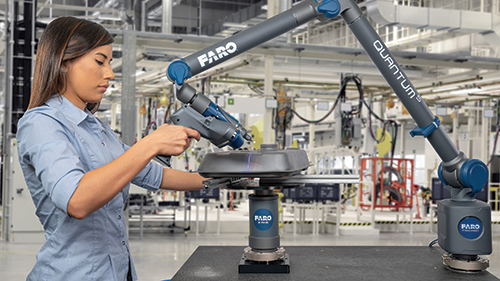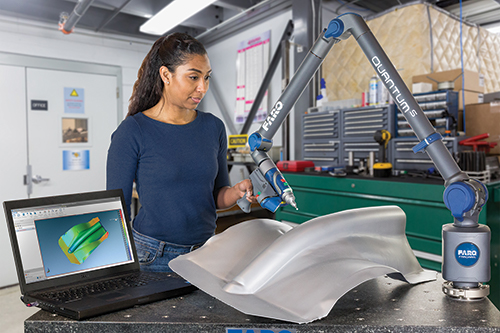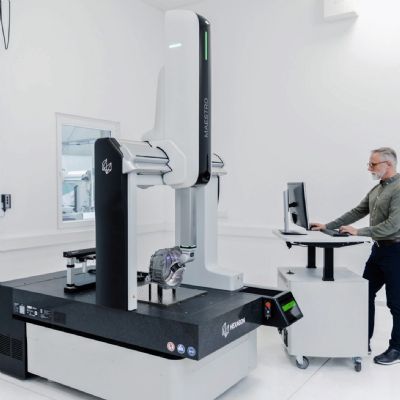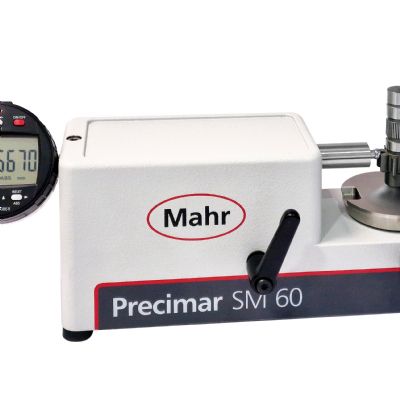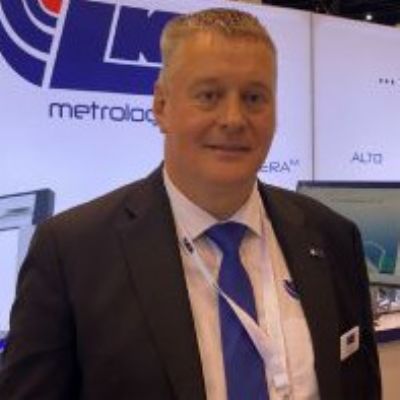Speed Essential on the Shop Floor
Advantages of Portable-Arm CMMs
Production volume, a major benefit of metal stamping, enables efficient production that delivers parts in a short time frame as compared to other processes. The ability to provide quality measurements inline or close to the production process enhances that benefit, making portable CMM arms ideal in stamping operations, according to Green.
“A portable CMM arm can be taken to the line or nearby to scan a part every minute or two as a check to see if something is wrong,” he explains, noting that an automotive A-frame pillar can be scanned in about 1 minute, with perhaps another minute for data to run through the automated inspection program, yielding a 100-percent inspected part with statistical process control for every feature and every data point. “If so, the part can get a closer look at the fixed CMM. With the arm, instead of blocking and fixturing the part for a fixed-CMM scan, a user just sets it on a flat and stable surface for scanning in a fraction of the amount of time and pick up any surface deviations.”
With scanning via portable CMM arms yielding so much data, users can refine that data to report only tolerance-critical information or other data deemed essential for quality and production personnel, or customers.
Inspect Dies, Too
While many stampers expect to use a portable CMM arm for scanning parts to compare to CAD models, the equipment also enables die inspection without impacting run time.
“Users can transport the arm to the press area and the die, without using power cables (many arms feature batteries) or data cables, as scan information transmits wirelessly from the arm to the computer,” Green explains. “No wires to get in the way, with no lag in the scanning. The scan completes, and the die resumes its run.”
The CMM arm scans the die face, picking up data points no matter the material or any shiny, reflective coatings, Green reports. The scan converts from a point cloud to an STL surface file. The file then can be compared to a part file to assess the die.
“And, the saved scan can be compared to scans taken on a regular basis, perhaps every couple of months, by overlaying the scans to find differences,” explains Green. “This allows maintenance personnel to see wear patterns and hot spots. From there, personnel can identify areas perhaps 0.030 in. high or low and perform the necessary work to bring the die back to needed tolerances. Portable CMM arms make great tools for die preventive maintenance.”
Reverse Engineering Aids in Repair
Beyond inspecting parts and tooling, the reverse-engineering capabilities of portable CMM arms offer the means to adjust and repair fixtures, and produce replacement parts for machinery throughout the plant.
“Users can scan, digitize in 3D and create an STL model with one button click,” Green offers. “The model can be sent to a 3D printer to produce whatever piece is needed. This enables redesign or testing of current parts, fixtures or whatever. And, suppose that a gear on a lathe breaks. The gear can be reproduced via scanning, with the file sent to a CNC machine and produced in a quick time frame. This capability improves machine uptime throughout the plant.
“Also, fixtures must be calibrated once a year or at some set interval,” Green continues. “They can be scanned with the hard probe as an indicator to see problem areas. Suppose a tower on a fixture has been bumped and must be brought back to its needed position. Use the tip of the probe on that post, and learn that it must be adjusted a quarter of a degree. The applications are endless.
Are the Arms Rugged Enough?
Stamping operations can constitute rough environments. Can portable CMM arms handle such conditions?
“Any shop-floor use exposes the arms to environmental variables not experienced in a controlled quality-lab environment,” Green says. “Dust, humidity, temperature fluctuations and more are common on the shop floor, but the arms are built to handle that. For example, they contain temperature sensors in all axes that compensate for thermal expansion and contraction of internal components. For extreme changes, say where a bay door opens and brings in 30 F air, the Faro system in particular will alert the user that the portable CMM arm cannot compensate quickly enough for the temperature change and provide two options: continue measurements―okay for loose-tolerance parts or weldments―or wait for temperature normalization―for aerospace flight-safety components featuring tight tolerances, for example.”
And, Green says, “Faro’s newest Quantum arms are ISO-certified for contact and noncontact inspection, a rigorous analysis of how accurate a machine is in the real world. In addition, all of our arms are vibration- and drop-tested to military specifications.”
Built to function in adverse shop-floor environments, portable CMM arms provide rapid, accurate measurement and ideally complement fixed CMMs. Consider them not only for part inspection, but for tool preventive maintenance, reverse engineering and more. MF
View Glossary of Metalforming Terms
See also: Faro Technologies Inc.
Technologies: Quality Control







